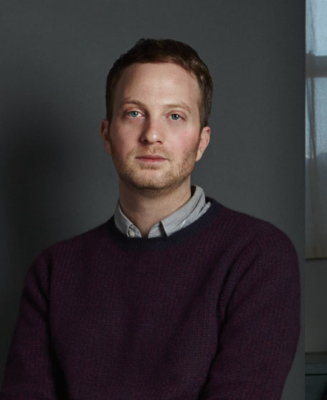I first met Matt Wolf when he offered me a internship on his film Teenage, a documentary about the birth of youth culture based on a book by Jon Savage. I spent the summer working with him and writing for his youth culture blog. Over lunch we would chat about his projects and he would offer me advice and insight on the life of a filmmaker and screenwriter. His previous films included Wild Combination about the avant-garde cellist and disco producer Arthur Russell and I Remember about the poet and artist Joe Brainard. Since that summer, Teenage has premiered at Tribeca Film Festival (2013), and Matt has been at work on countless other projects. His new film It’s Me, Hilary: The Man Who Drew Eloise just premiered on HBO. From contributing to The New York Times to being awarded a Guggenheim fellowship, Matt’s work is both timely and lasting. In his One Question, Matt discusses Mary Gaitskill’s work, and a cinematic chance encounter.—Monika Zaleska
What one piece of writing has changed the way you think about your own work?
My favorite contemporary novel is Veronica by Mary Gaitskill. I remember reading it on a long train ride to my friends’ wedding in England. I felt sucked into that book, and for those few days nothing else existed. During the wedding I snuck away to my damp room in a nearby house to devour the final chapters. When I reached the last page I cried because I knew that I wouldn’t love another book like this for a long time.
Veronica is about the unlikely friendship between two women in 1980s New York. The narrator Allison is an emotionally stilted former model who works as a temp alongside Veronica, a bawdy woman whose tumultuous affair with a bisexual dancer leads to her death from AIDS. Allison is at once repulsed by Veronica and proud of herself for befriending somebody so seemingly ordinary. Veronica is flattered that glamorous Allison confides in her, but she is repelled by her emotional hollowness. The book is a piercing and perceptive examination of the emotional bonds that form between women and strangers.
A few years later I came across a book review by Mary Gaitskill that would have a huge influence on how I think about my own work. “Satan Goes to Harvard,” published by Salon in 1997 is more of a literary treatise than a review of Melanie Thernstorm’s nonfiction book Halfway Heaven. In the essay, Gaitskill examines the story of Sinedu Tadesse, a 20-year-old Ethiopian scholarship student who brutally stabbed and murdered her roommate Trang Ho, a gifted Vietnamese immigrant also on a scholarship at Harvard. By all accounts the victim was a selfless, gifted angel. The perpetrator had no meaningful bonds with friends or family, and according to Gaitskill, the author consults psychologists and police to confirm that she was indeed a psychotic monster. Gaitskill writes, “In an attempt to place the event in a deeper moral context, [Thernstorm] blurs Sinedu’s “illness” with evil, almost equating one with the other, creating an artificially profound effect.”
In the essay Gaitskill empathically reads Thernstorm’s book to interpret Sinedu’s emotional desperation. She writes, “Most of us will never commit murder. But who of us has not been cruel? Who has not inflicted pain on another, even if just with words or with an expression in the eyes? On a practical human scale, there is a huge difference between murder and verbal cruelty. On a cosmic scale, I’m not sure the difference is as vast as we would like to think.” Gaitskill recalls being unable to sleep that night after finishing the book, startled by cats fighting outside, and shaken by Sinedu’s grizzly crime and Ho’s tragic demise. She writes, “Whatever evil you are feeling is in your own head. That realization was harder to face—and sadder—than my fear.”
To me this sounds a lot like Veronica, and perhaps Gaitskill’s work in general. Allison and Veronica are horrified by what they recognize in each other. Their friendship is a seductive mix of empathy and contempt, of generosity and cruelty, and some might say of good intentions and evil wishes. That ambiguity is what makes Veronica such an emotionally involving, challenging book.
As a documentary filmmaker I try to avoid psychoanalyzing people who can’t speak for themselves. And from Gaitskill’s essay I’ve learned to not ascribe moralistic meaning to a subject’s actions as a way to make “sense” of them. Gaitskill’s empathy is a powerful foundation for creating or depicting complicated, truthful characters, even if the facts of their lives are ugly. In her reading of Thernstorm’s book, Gaitskill finds meaning in what seems like a meaningless tragedy, and in the media’s desire to make sense of such cruelty through clinical and moral explanations. It made me realize that there’s a larger emotional interpretation of the world in her writing, and that she sees evidence of it around her.
I think Mary Gaitskill was subletting an apartment near me recently. I kept seeing her at my subway station. One day I sat straight across from her and stared at her striking pale complexion and intense expression on our way into Manhattan. She was wearing an oversized T-shirt and black leggings with sandals. I’m not sure why I was staring at her because I didn’t want to engage her in any sort of conversation. I guess I was imagining becoming friends—intimate strangers introduced by random coincidence like Veronica and Allison. I fantasized that as our relationship developed, I might recognize something about myself in her. But then I realized I’m projecting, and she got off at Union Square.![]()
